Faux Red Currant Jam that comes very close to the Real ThingIt has been a while since my last blog post. Time seems to just run away from me. I spent two wonderful weeks in Germany for a family event. I am always happy when I see my family and friends and reconnect with them, even if it is only for a short time. What a privilege. After five days at my village, I drove with my niece to Lüneburg which is my favorite town in Germany. I ended my trip In Berlin with my niece and her family. We had a great time at the Berlin Zoo and Aquarium with my two-year-old grand niece. I returned severals weeks ago, and have I to say that this time, I had a bad case of jet lag for a week. Age may have something to do with it. A couple of years ago, I bought this wonderful cookbook called Baking At the 20th Century Cafe by Michelle Polzine. The author specializes in baked goods from across the former Austro-Hungarian empire. I cannot resist these delicious delicacies. What I especially like is that she substitutes domestic ingredients for the often hard to find European ingredients. I love this and I find her recipes exquisite. I posted her recipe for roasted strawberry ice cream in September. Two of my favorite jams are sour cherry and red currant. Both fruits are rarely available here in California, and if you find them they are expensive. This faux red currant jam is made from cranberries and pomegranate juice and comes very close to the real thing. I have made it for three years now and and everyone seems to like it, and it is perfect on baked brie or pears. And it is delicious with duck or on any cake or cookie, like Linzer torte. It also makes a great gift for the holidays. I have doubled and tripled this recipe. I learned a new way to prepare the jars for the jam by putting the clean jars in a warm oven. Ingredients: This recipe makes about three 8 ounce jars 3 cups (300 grams) fresh cranberries 2 cups (390 grams) sugar 2 cups pomegranate juice Directions: Put a small plate in the freezer Preheat the oven to 250˚ F (120 Celsius). Put the clean canning jars on a sheet pan, lined with a damp towel, and transfer it to the oven. Put the jar lids, funnel, and tongs in simmering water on the stove. Wash the cranberries and discard any squishy ones. Put them in a large pot with the juice and sugar, and bring to a boil over medium-high heat, skimming off the foam that rises to the top. Reduce the heat so that the mixture simmers until the berries pop. Stir with a whisk to break up the berries. I use a masher to smash the berries. Continue cooking until the mixture has thickened and registers 221˚F (105˚Celsius) on an instant-read-thermometer. It will take about 10 to 15 minutes. To test, drop a spoonful on the chilled plate and see if it has thickened. Remove the jars from the oven and ladle the jam into them, filling each one within a millimeter of the top. Wipe the rims of the jars with a wet paper towel, and seal the jars with the lids and rings. Invert the jars and let them cool . After a few hours, test the jars to make sure they have sealed. And tighten the rings. If they are not sealed, put them in a water bath for 10 to 15 minutes and boil them until the tops pop. You know your jars are sealed when the lid doesn't move when you press on it. To be totally safe, follow the manufacturer's instructions that come with the jars. Guten Appetit! Recipe by Michelle Polzine from her book Baking At The 20 Century Cafe Posted by the Sunnycovechef.com My cranberry ketchup is perfect on any sandwich, but will elevate a turkey sandwich to a different level. Click here for the recipe. In 2016, I posted this recipe for Linzer Torte. The cranberry-pomegranate jam will be perfect for it. Click here for Linzer Torte recipe Whenever I visit Germany, I have to have Matjes herring. It is a northern German dish that I absolutely love. I have discovered a way to make here at home. Click here for the recipe Next week it is my turn to host our bookclub. Because it's the holiday season, I am treating them to a cioppino dinne . Cioppino is a medley of fresh seafood in a rich wine and tomato broth. This has been my go-to dish for many years when entertaining during the winter months.
Click here for the recipe.
22 Comments
One of the reasons I write my blog is to share my love of cooking and experimenting with different foods. There are so many recipes hidden away in my folders, magazines and books. And there is so much food I buy because it looks so good, as was the case when I ended up with an abundance of fresh berries and cherries. I used the freshest fruits for my Rumtopf and the rest of the berries to make a quick jar of jam, using only one tablespoon of honey as a sweetener. It is good and I have been eating it for the last three weeks. My favorite is to put it on a cracker with peanut butter for a quick snack. It’s also great on my morning yogurt. This is the perfect recipe for making your first jam. I realize cherry season is over but with this recipe you can use other seasonal fruit. It’s easy and doesn’t take much time and effort. I found the recipe in a magazine called Real Simple that I enjoy reading. A little warning that this is not a sweet jam; it is more of a spread on the tart side. The original recipe called for chia seeds and I added them, but I made my second batch without them and I like that better. I like the crunchiness of the chia seeds, but one could easily mistake them for blackberry or raspberry seeds. Here are some recipes for some of the marmalades and jams I have made in previous years. Plums are in season right now and my Zwetschgenmus (spiced plum jam) is a real treat, as are my other jams. You only need three ingredients for this jam. The consistency is more of a topping or spread than a jam. It is tart and has to be kept in the fridge.
This is the first time I made strawberry jam with homemade pectin. The jam carries the fresh sweet flavor of sweet strawberries. It has the essence of the food. Nothing takes away from the flavor. It is a runny soft jam, thickened just a little by the pectin of the green apples. This is a keeper for years to come.
This recipe comes from "Preserving the Taste by Edon Wycott." I found it on the cooking channel site. Emeril Lagasse used it in his strawberry recipe. Remember this has to be made at least a day ahead of time before you make your jam.
Boy do I love apricots! In summer, while apricots are in abundance and at their peak of flavor, it's jam making time at my house. Yes, it's a bit of work, but isn't it worth it to have this wonderful fruit all year long? What's better than waking up in the morning, buttering some whole grain toast and then slathering on a heaping spoonful of this fruit goodness. Nothing I say. Nothing is better. The almond pits add a delicate hint of bitter almond flavor. I roast all the almond kernels in a preheated oven at 350˚ for 10 to 15 minutes . This makes them easier to crack them open and also destroys an enzyme that generates poisonous prussic acid when the kernels are mixed with water. I crack my kernels with a hammer and roast the remaining pits for another 5 minutes. For this recipe I used about 8 pits and chopped them .
I made two batches of Jam. The Plum Jam is very tart. The second batch is dense and sweet. I like making them because they are so easy to make. While they are baking you can relax, read or clean the house. In Germany, jam is usually made with " Gelierzucker", a mix of sugar and dry pectin I assume. I made my own by mixing dry pectin and sugar together. This Jam needs to be processed in a water bath to seal correctly. Follow the manufacturer's instructions.
This is my husbands favorite jam. He uses it for his peanut butter sandwiches. It is a tart thick jam that will stay on your toast. Because of the blackberries it will have some seeds. I have made this jam with blueberries instead of blackberries and it is just as good. This is an easy and quick way to make jam. This is a tart jam with a berry flavor.
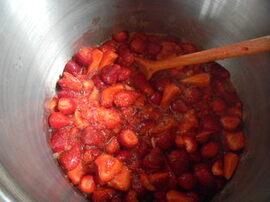 This is a recipe I have used for years and it is a favorite it has a tart fruity flavor with a tang which I believe comes from the combination of the lemon juice and the grated green apple. Last year more of the strawberries were left whole than this year and I think I like it better that way. One can manipulate the consistency of the jam by how long it is cooked. This is a no fuss recipe which is easy to make.
When I was a child, we had several plum trees in our garden. One variety was called Zwetschgen, similar to the prune. Our Zwetschgen tree would overflow with fruit and our family would make Zwetschgenmus (aka spiced plum butter) in a huge copper kettle that was heated by a piece of burning wood from underneath. We would have big glass canning jars with rubber rings in our pantry filled with delicious plum butter. As children we could not get enough of this sweet, rich and gooey plum butter spread on country bread and topped with schmand. The best way to describe schmand is a fresh cream that is similar to Créme Fraîche or whipping cream. I used greek yogurt on my sandwich . In this country we call Zwetschgen Italian plums and they are seldom available where I live . You can imagine how happy I was when I found them in a local food stand. I bought all they had and made two different batches of Zwetschgenmus and baked two different cakes. My Zwetschegenmus is a tartly rich and earthy-tasting fruit butter with a slight taste of cinnamon and allspice. These sour little plums (without much juice or flavor) once baked turn into an amazingly flavorful treat. It’s like the frog that turns into a prince. For the Zwetschgenmus, I chose a recipe from Louisa Weiss’s Classic German Baking book. I have to say it turned out just as good as Helga Papas,’ my village neighbor who has made it for decades in Germany and always shared some with my family. My brother is especially fond of it and I will keep a jar for him to eat when he comes to visit me this year. If you see this little unpretentious plum in a store next to their juicy voluptuous cousins, don’t pass them by. You will not regret it when you have a spoonful of Zwetschgenmus. The plums are baked in a heavy cast iron pot until they turn into a sticky mass and are completely broken down. Make sure you use a four-quart cast iron pot. I used a smaller one in my first batch, and it took twice as long to bake them the next day. The second time, I used a four-quart pot and baked it in 2.5 hours instead of 4. Luisa Weiss says that the recipe is easily doubled, but unfortunately I ran out of plums.
There is nothing better than a ripe apricot—picked fresh from the tree and eaten right away. Dripping with juice, tasting intensely sweet with a tinge of acidity, eating an apricot is a truly sensual experience.. However, most of us will not experience this because today’s apricots are picked firm and then brought to the market. Most varieties grown today have little flavor, are usually pale, odorless and tart. If you want the old-fashioned apricots, look for Blenheims. This apricot got its name from the Duke of Marlborough’s garden at Blenheim Palace in England. Apricots were probably cultivated in China thousands of years ago. The Spaniards brought apricots to the New World and planted them in the mission gardens of California. If you are lucky, you can find Blenheims in the costal valleys of California. This year, I bought a crate (28 pounds) of apricots from one of the road stands in the central valley here in California. They were not Blenheims, but had been picked riper than the commercial kind. I don't know what kind of apricot I bought. They were okay, but I had bought a crate of apricots at the same farm stand the previous year and they were better. I put the apricots in a single layer in my cool downstairs bedroom and immersed myself into cooking them. Most of them became apricot jam. The jam turned out fabulously this year—smooth and velvety with a little crunch from the apricot kernels and texture from the skin. It was just the way we like it—sweet and tart at the same time. I would not omit the pits, as they really add a lot of flavor. For this years recipe, I used 10 pounds of apricots, 6 pounds of organic sugar, 16 cracked and roasted pits and 6 TBS of lemon juice. I was thinking about adding a vanilla bean or a cinnamon stick (or maybe some ginger), but in the end I did no such thing. I like my jam without any other flavors. The fruit itself is enough. My husband likes my cobbler, and I baked two while I still had apricots. I like my cobbler because I use very little sugar, but it tastes delicious. I made the same cobbler for the 4th of July using peaches, blackberries and a few leftover blueberries. I am very found of my German apricot cake with marzipan. It’s easy to make and a real treat for an afternoon tea. Or great for a picnic on a warm summer day. My all-time favorite treat during apricot season are apricot dumplings. In Austria, they are considered a meal unto themselves. To make these, you need quark, a German soft cheese. Whole Foods and Shopper's Corner in Santa Cruz now carries quark. While looking through back issues of my beloved Gourmet magazine from the month of June, I found a shrimp, jicama and apricot salad recipe. My husband loved this salad because it is crunchy, fresh and light. For me, the salad was a little bland, yet it was refreshing and elegant in its presentation. It is a perfect salad if you are counting your calories. I can imagine a salad like this being served decades ago in a fancy private club or hotel. Even though this is not my favorite salad, I decided to post it anyway.
Why the title? Because next week if everything goes well, my hubby and I will be in Paris. We will have our sentimental Paris moments sitting on a bench in the Tuileries Gardens. Which flowers are blooming at the end of June? We will discover our favorite places on foot, browse outdoor markets, observe life from an outdoor café and poke our noses into doorways to find hidden courtyards and gardens. We will visit some museums and I hope to discover new little restaurants, cafés, bakeries or anything that has to do with food. We will do what we had planned to do last year in April. But circumstances changed. Read my story here. Now to the apricots! Originally, I had planned to post some new recipes, but they needed more work before I can launch them into cyber space. But most of all, it is apricot season. I love apricots and I especially love apricot jam. I made my apricot jam this year with different apricots and it turned out fantastic. I love the flavor, so sweet and tangy! I think adding the apricot pits puts it over the top. I've been eating it by the spoonful. I was looking for Blenheim apricots, but they are just getting ready and are only available for a few weeks. This delicious German apricot coffee cake was one of my first posts. I made it again last week and it was well liked. The cake is easy to make, as it is light and fluffy .The apricots give it a nice fruity flavor and it looks great when you cut it into pieces. This cake will dazzle at any picnic or potluck. Adding a little piece of marzipan where the pit was just adds additional flavor. You can also substitute plums for apricots. Last but not least is my fruit tart. A marzipan cream is added to the tart before you add the fruit. This tart is yummy. Again, you can substitute other fruit for the apricots. I added some raspberries I had left over. Instead of inviting your friends for dinner, invite them for tea or Kaffeeklatsch as we call it in Germany. Kaffeeklatsch means to have coffee, something sweet to nibble on and Klatsch, gossiping ...
Let me know if you have a favorite restaurant or place in Paris. I would love to hear from you. Cross your fingers and hope that hubby and I are over our colds before we leave. A tart , fantastic tasting jam My friends, Jacqueline and Heinz, have a beautiful sour cherry tree. These cherries live up to the word “sour”—or let's say tart. They make your mouth pucker. But they are absolutely delicious, very delicate with a soft skin and texture. This is not any commercial variety. I am supposed to be getting ready for my 5-week long trip to Germany, with a hundred things to do before we leave—but I just had to have some of these cherries. I picked about three pounds. I ate a lot and made about 4 pint-sized jars of jam and a cherry clafoutis. The jam is to die for— it’s tart and carries the essence of these gorgeous cherries. I like to eat it mixed with yogurt, on a piece of toast, or in my cherry chocolate tart. The icky part of making this jam is pitting the cherries. My husband volunteered for this very messy job, bless his heart. It took him 30 minutes to pit those little buggers with a cherry pitter, although he did watch the baseball game with one eye while pitting. You have to wear an apron and and short sleeves. Our cutting board now has cute little red spots. I wasn't going to blog this, but changed my mind. I'm starting to like taking photos, plus I have this cute hand-painted cherry platter made by a local artist Beth Grippenstraw in Santa Cruz, California. (check out her work, fun and very unusual). I used David Leibovitz's recipe for the jam, he calls it no recipe jam. You can use any variety of cherries for this jam. Wash the cherries thoroughly and drain them in a colander. Pit the cherries, and if they are big and the skin is tough, cut them in smaller pieces. I left mine whole since they were small enough, had soft skin and were very juicy.
A marmalade that is great on toast, but will also enhance your cooking I love really love the taste of citrus. One of my favorite snacks is candied orange peel. So it is no surprise that I also love orange marmalade. It is not just ordinary orange marmalade—it is blood orange marmalade, which has a more intensive orange flavor. There are different kinds of blood oranges. This year, I have been buying organic Moro oranges at our local farmers market, which are the most colorful blood oranges of them all. The juice of a Moro orange is rich in anthocyanin, which may help prevent a fatty liver (according to wikipedia). I make this marmalade not only for my buttered toast, but to use in sauces, fruit compotes, cakes and crepes. However you use it, it adds flavor and richness. I used this marmalade to make the ganache for my chocolate tart. The recipe comes from a beautiful calendar that a friend sends me every year from Germany. He took over this tradition when my father passed away many years ago. He is so sweet and I appreciate it so much. Thank you, Ekkerhard Lindner and family.
Plum Jam Baked In The Oven The easiest jam ever, I promise, no fuss, no mess, just let it bake in the oven. Once in a while you can take a peek. Don't be tempted to stir before you have quite bit of liquid in the pan. My mom told me that she never stirred because she was too busy doing other things. I stirred at the end mashing the fruit. I wanted to incorporate the plum skins into the jam. A word of caution, this jam is tart and I mean tart. You might want to consider increasing the sugar. I like having different kinds of jam in the house. At Christmas this one will be a treat on French brie or cream cheese.
I made another small batch with plums and blackberries using more sugar. This one turned out sweeter, more like a traditional jam and my husband liked it. 30 Jars of Jam It began a week ago when Ronald, a local organic farmer, told me that his strawberries were just right for making my jam and I knew I had to do it soon because I'm going to Germany in a couple of weeks. With that in mind I stocked up on organic sugar that I like to use (this sugar is not as fine as regular sugar) and made sure I had enough jars and lids. For some time I kept a recipe for homemade pectin and this was the year I was going to try it. Last year I made strawberry jam, and mixed fruit jam, using strawberries, raspberries, blackberries, and my rhubarb that I grow in my tiny little plot in front of my house. My husband's favorite is the mixed berry jam. He likes his jams spreadable and I like mine runny, dripping off my toast, and excellent over vanilla ice cream. Last year I had used powdered pectin to give the mixed berry jam the consistency my husband likes. On Saturday I visited my friend's Birgit and Robert, who have a wonderful piece of property, where Robert has planted a variety of usual fruit trees, berries, and a fantastic vegetable garden. It is a cooks paradise. We picked several pints of ripe blackberries and some green apples, not quite ready to eat but great for my homemade pectin. On Sunday morning I bought my flat of strawberries from Ronald at the farmer's market. At the market I also noticed that, "Dirty Girls,” another local farm, (I love the name) had strawberries for jam on sale. I couldn't resist and bought another half flat. Here I was with 19 pints of strawberries and some additional fruit waiting at home.
I spent a glorious week in the Sierra Nevada Mountains in our little cabin. To get there we have to go through the central valley of California, the fruit basket of our nation. Many farms sell their produce on site . Right now the apricots are ripe and I couldn't resist. So here I was with pounds and pounds of wonderful apricots, 2 boxes to be precise.
First I gave all my neighbors and friends some, then I made jam with 10 pounds. I used Alice Water's recipe from her "Chez Panisse Fruit Book." I loved the first batch so much that I made another one. I tweaked her recipe by using less sugar and more lemon juice. Each time I doubled her recipe. The first time I let the apricots and sugar stand overnight in a covered bowl , stirring several times. For the second batch I let the apricots and sugar stand for a couple of hours but I added the juice of a lemon . This time I stirred often and the sugar dissolved faster. I like my jam soft with pieces of fruit. |
WELCOME TO SUNNY COVE CHEFThank you for visiting my blog. My two passions are cooking and traveling. Traveling exposes me to a wide variety of food and experiences. I walk around cities looking for markets, restaurants, bakeries, shops, you name it, and if it is related to food you will find me there, tasting, smelling, talking to vendors, and having a great time. Categories
All
Archives
February 2024
|
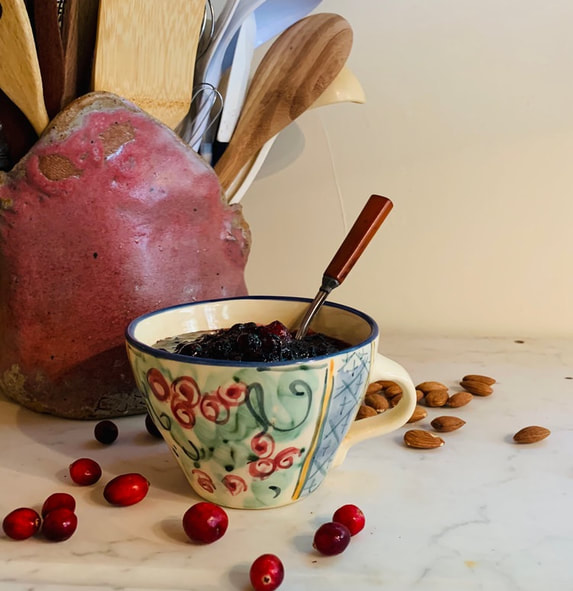




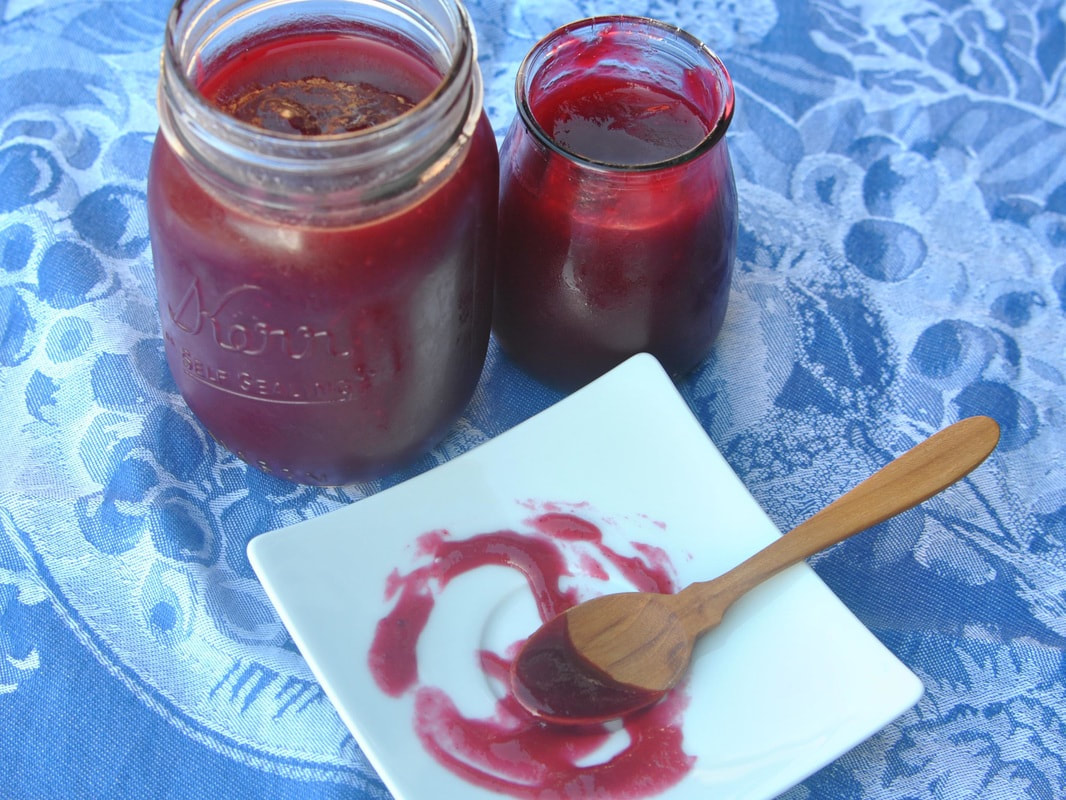


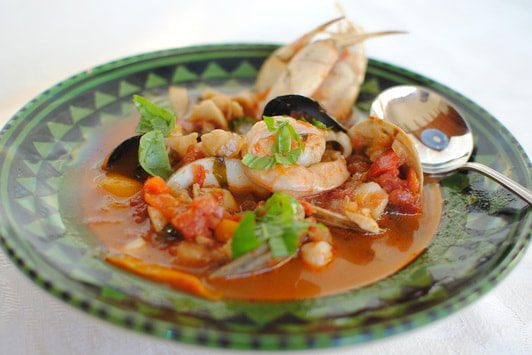



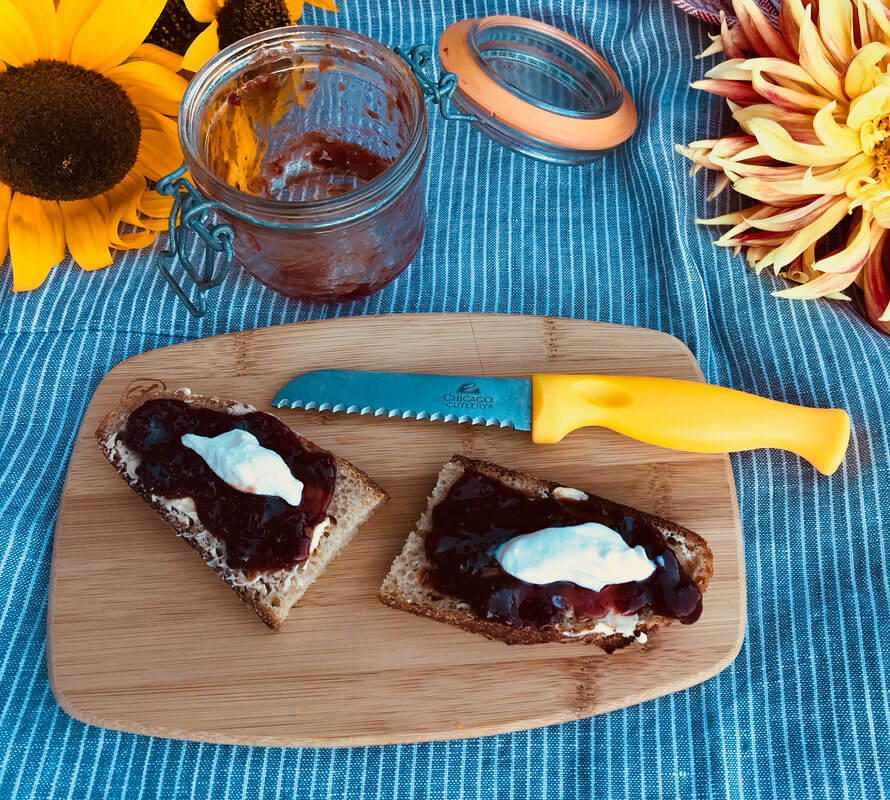

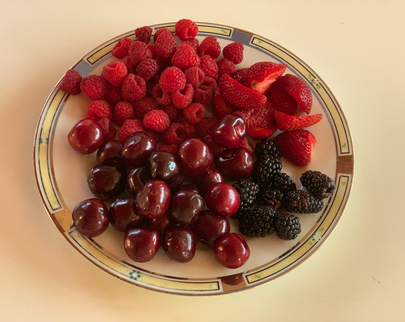


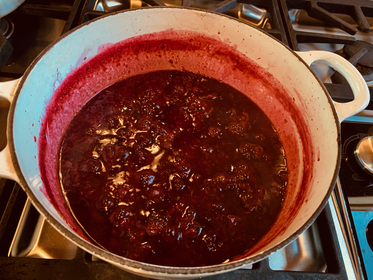
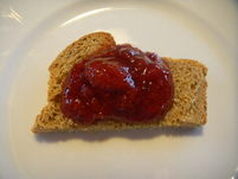
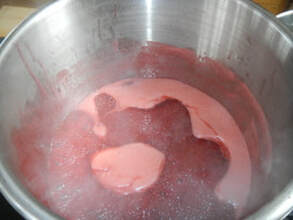




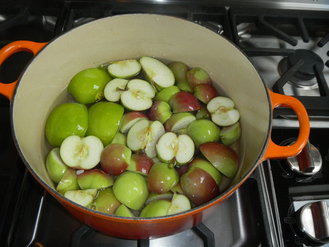
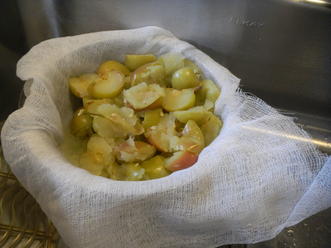




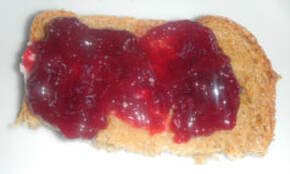

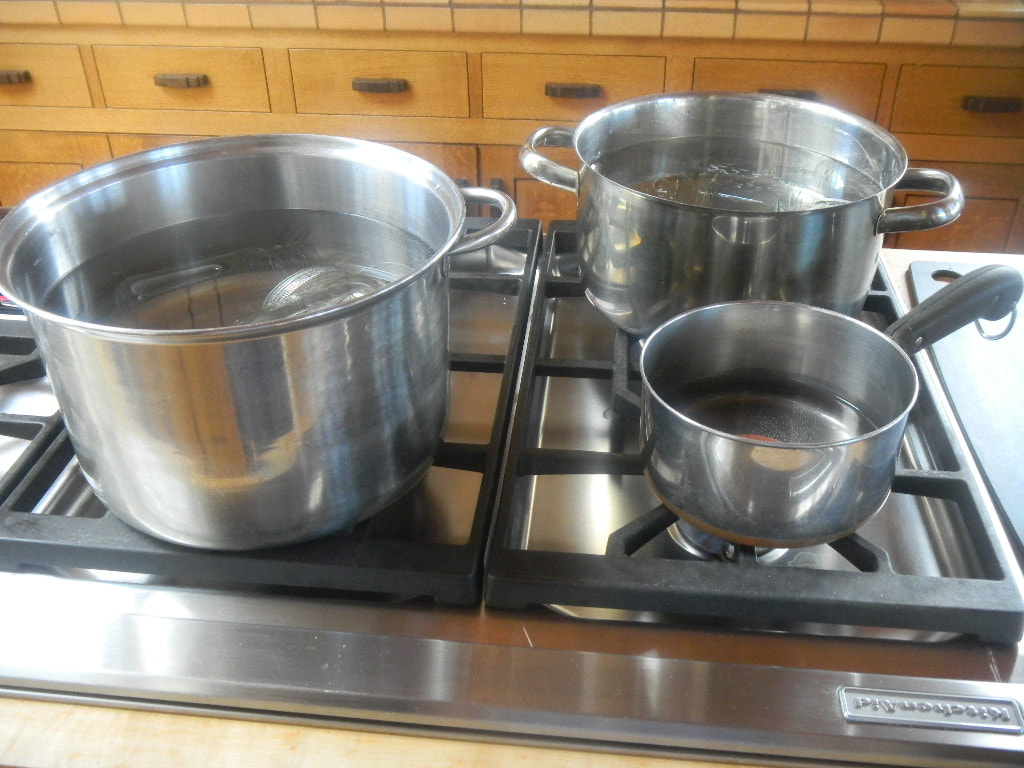









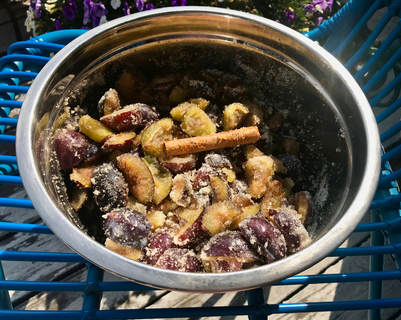
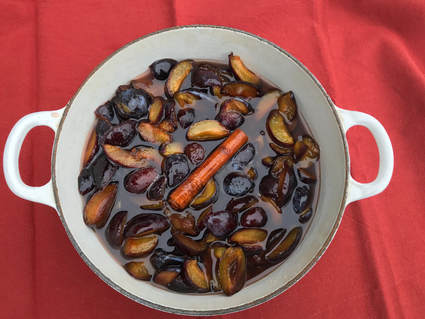
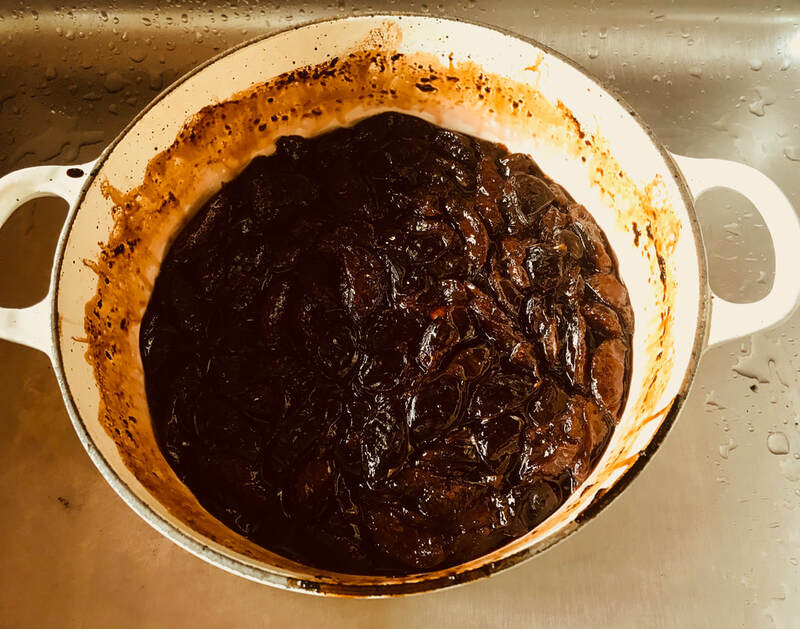



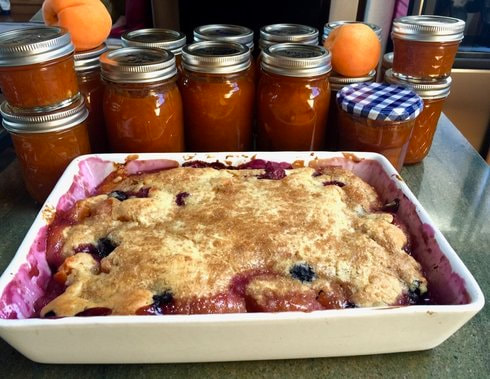


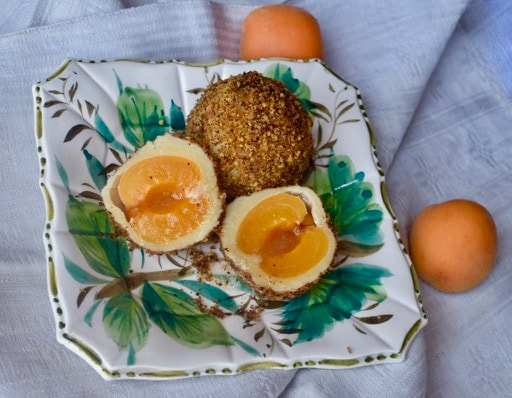





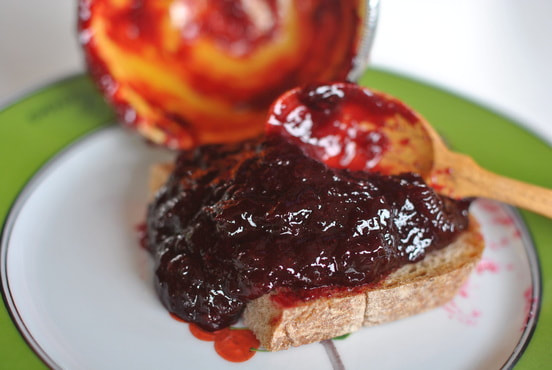







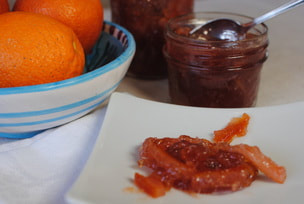
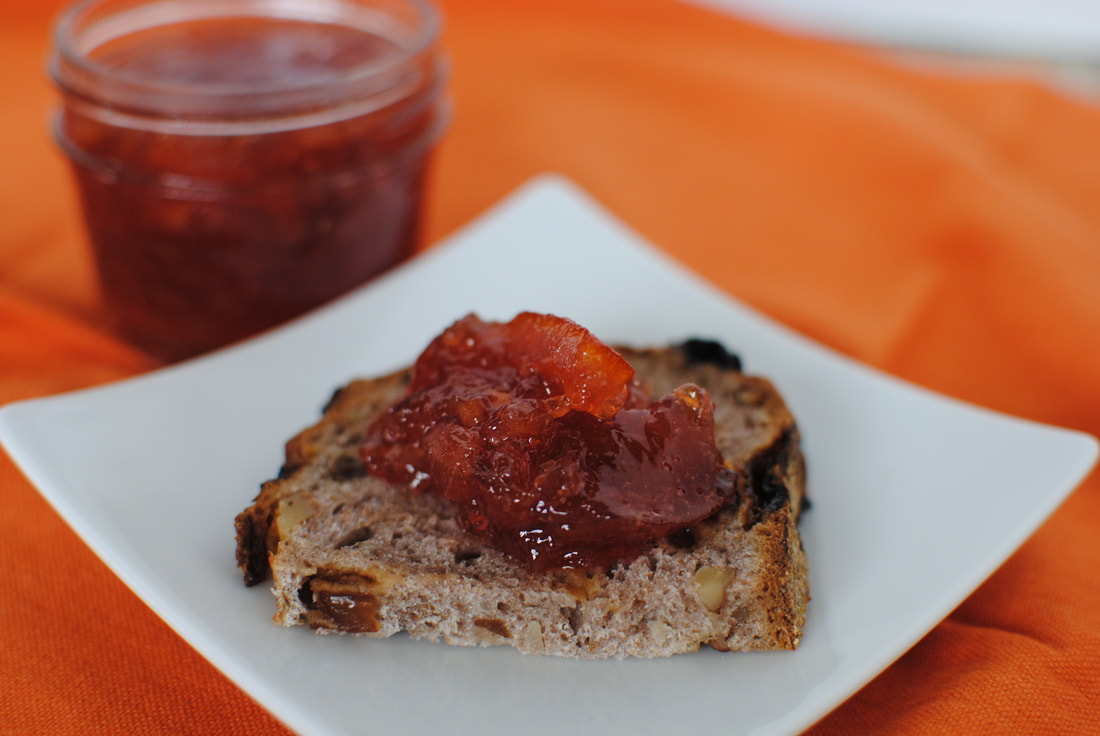
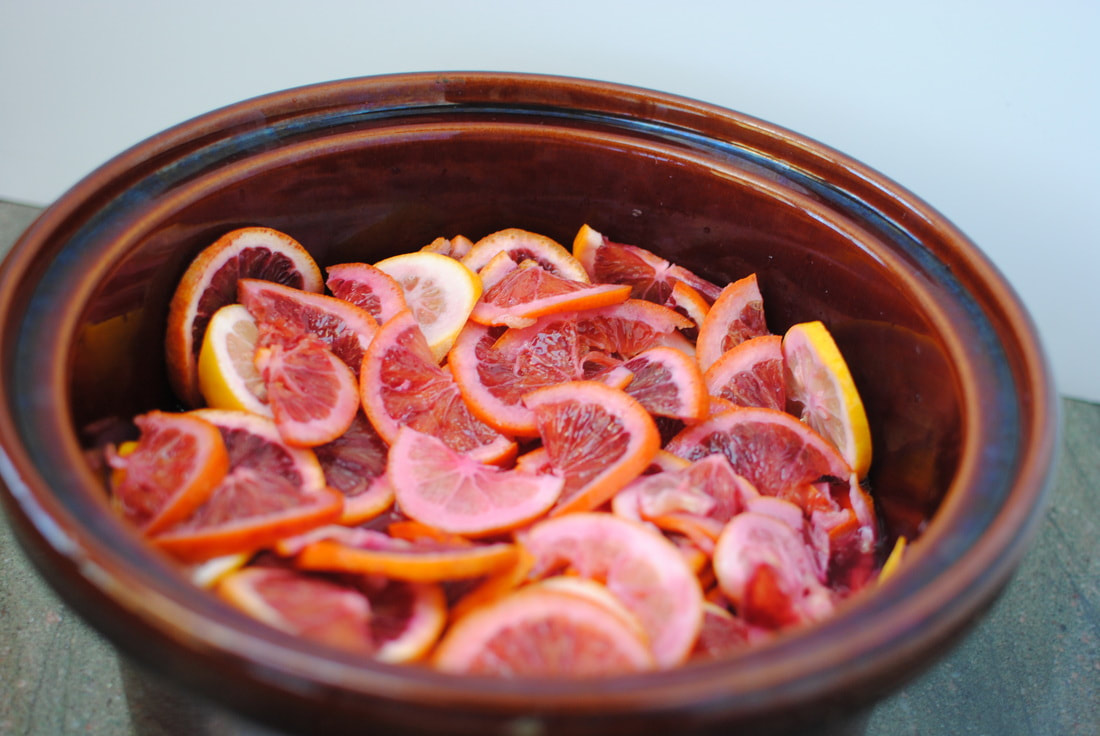


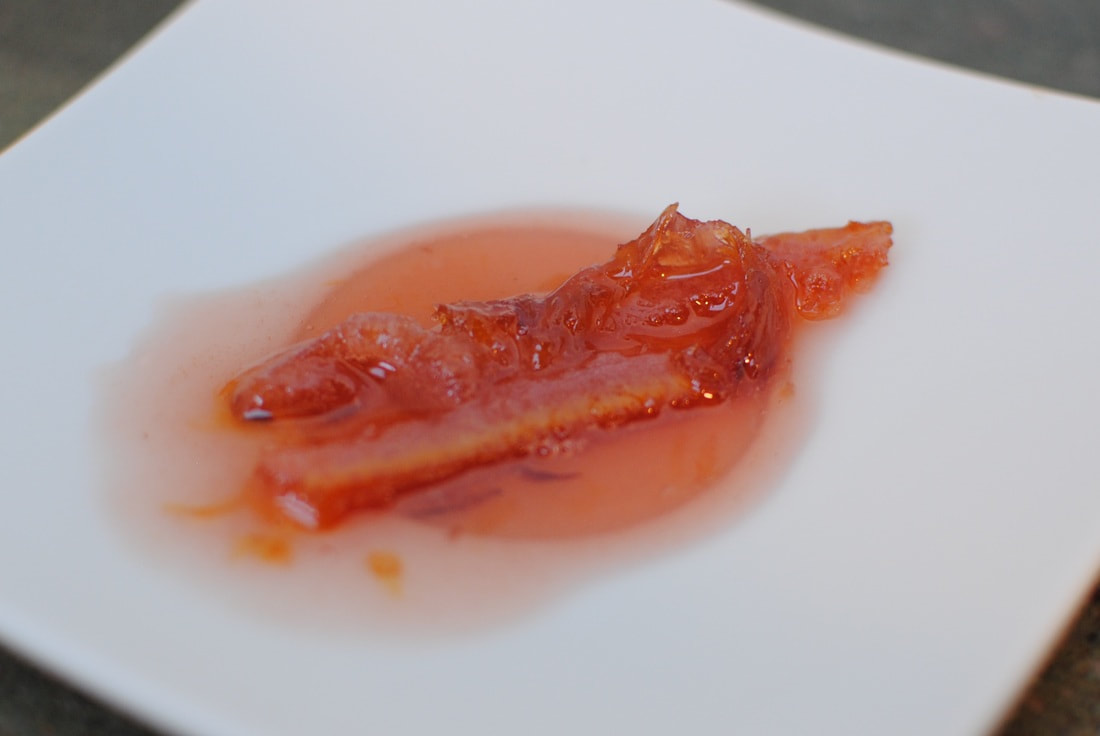

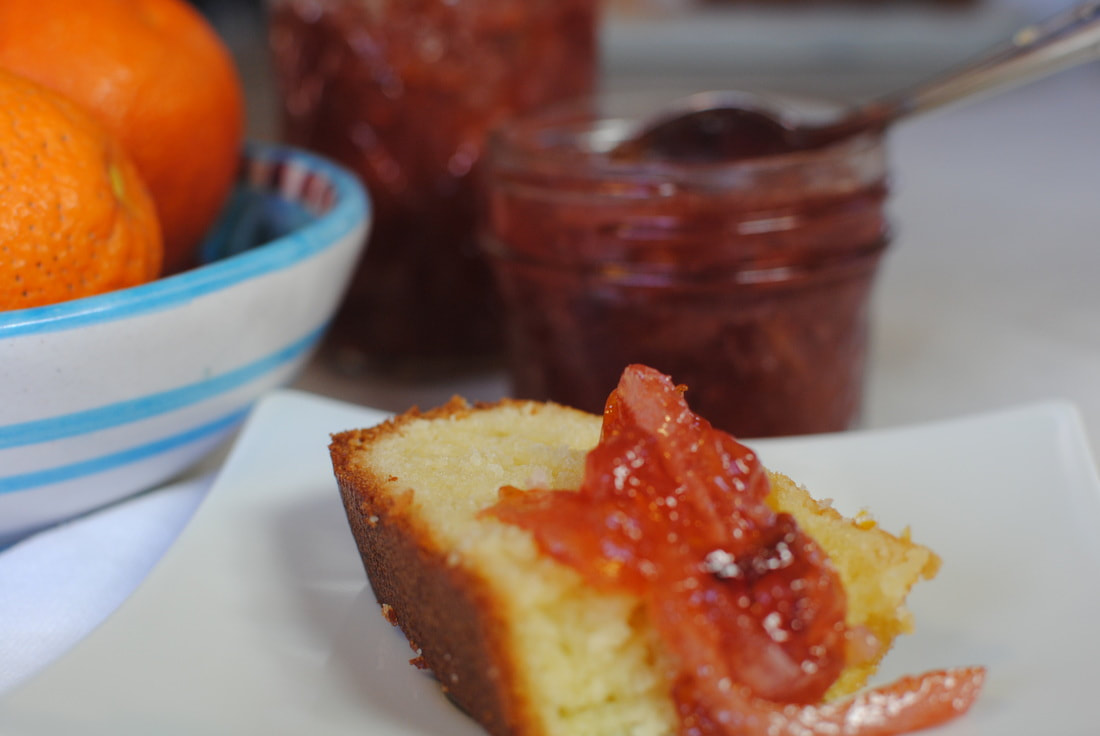




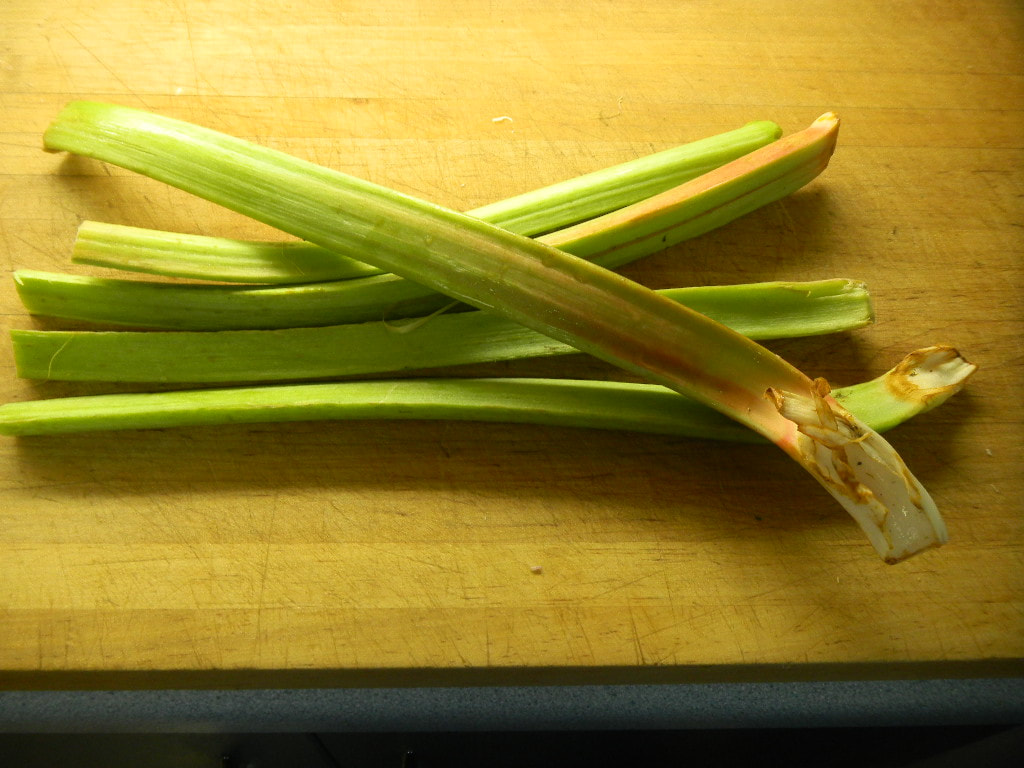
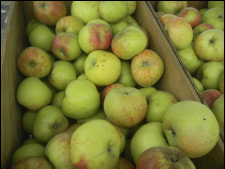
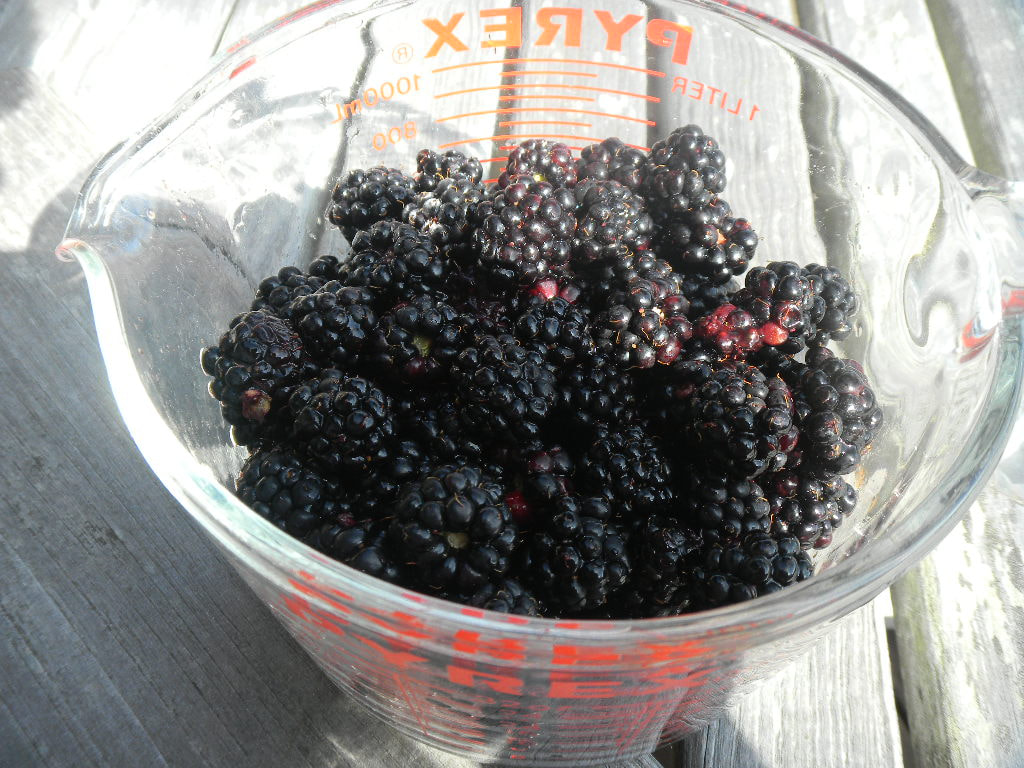
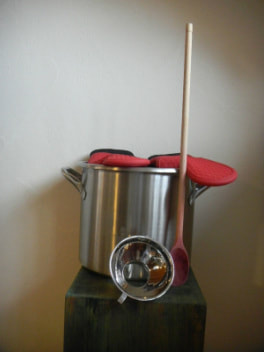


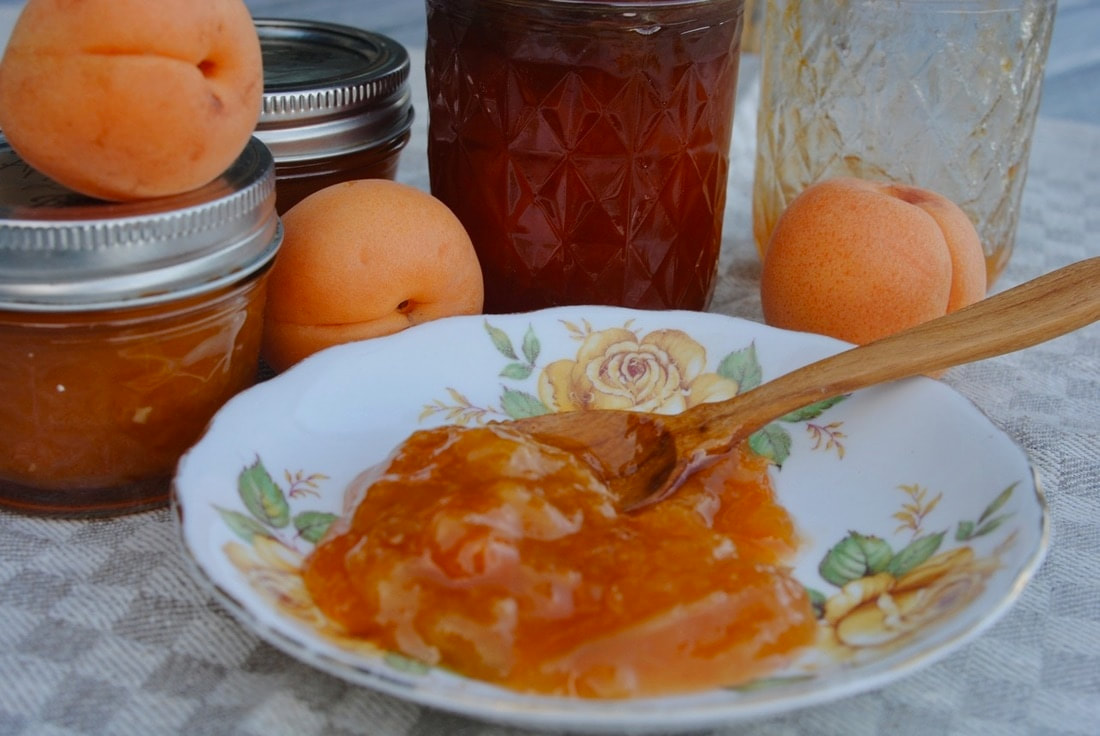
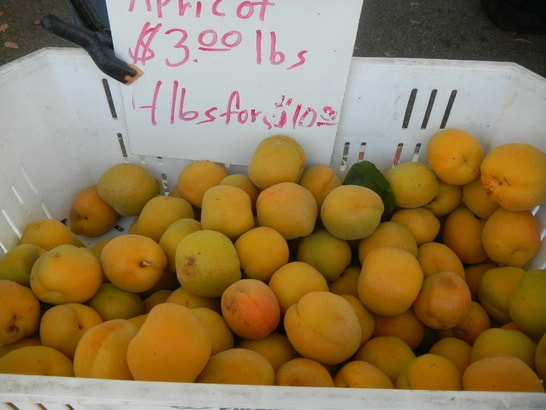

 RSS Feed
RSS Feed